Building Hope Together: The Real Story of Habitat for Humanity of Clallam County
How one community-driven organization is creating stability, dignity, and opportunity—one home at a time.
Author’s Note
I am honored to serve as the Vice President of the Board of Directors for Habitat for Humanity of Clallam County. The article below draws from my personal knowledge and passion for the organization, but it is important to clarify that this piece is not an official publication of Habitat for Humanity. It reflects my individual perspective and has been enriched by input from the organization, yet it remains a personal initiative rather than an organizational statement. My hope is to provide valuable insights into this remarkable organization's mission, work, and impact.
Welcome: A Closer Look at Habitat for Humanity of Clallam County
We live in a time when headlines are loud, assumptions spread quickly, and simple truths can get lost in the shuffle. That’s why we’re inviting you to take a step closer—to go beyond the soundbites and social‑media chatter and spend a little time getting to know us: what we do, how we do it, and why it matters.
At Habitat for Humanity of Clallam County, we’ve been building more than just homes for over 30 years—we’ve been building stability, dignity, and opportunity for families across our region. And now, as we grow to meet the increasingly urgent need for affordable housing in our community, we want to do so with openness, clarity, and open arms.
This article is our invitation to you. Whether you’re a longtime supporter, a curious neighbor, or someone hearing about us for the first time, we hope you’ll take this opportunity to learn more about who we are and what we stand for.
Here’s what you can expect as you read:
Mission & Structure – We begin by grounding ourselves in our mission and explaining how Habitat for Humanity operates both globally and locally—what we share with affiliates around the world, and how our work in Clallam County is tailored to the unique needs of our community.
The Homeownership Model – We’ll walk you through how our homeownership model actually works to clear up some common misconceptions and show you what it truly means to partner with Habitat Clallam to own a home.
Beyond New Homes – You’ll learn that Habitat is about more than new homes. From critical repairs and accessibility updates to veteran housing and workforce development, we’ll show you how we serve in ways that often go unseen but make a deep impact.
Funding – We’ll share how this work is funded—from our Store revenue to private donations and public grants—and explain clearly how we responsibly grow and use the resources entrusted to us.
Scaling Up – You’ll get an inside look at why we’re scaling up, including the challenges and decisions behind projects like Lyon’s Landing and the pivots we’ve made in response to changing conditions.
Building Stronger Connections – We’ll share how Habitat is working to strengthen relationships across the community, including a first‑of‑its‑kind Native American Housing Liaison program designed to foster understanding and partnership with local tribes.
Governance & Proactive Communication – We’ll take time to talk openly about how we operate, how decisions are made, and why some details take time to share—not because we want to hide, but because we want to get it right.
Common Questions Answered – Along the way, we’ll address and clarify some of the public’s questions, while modeling the honesty, respect, and community spirit that guides all our work.
The Bigger Picture – And finally, we’ll zoom out to talk about why this work matters so deeply—how homeownership transforms lives and how each of us has a role to play in creating a more stable, compassionate, and affordable future for everyone in Clallam County.
This is not just a story about Habitat—it’s a story about what we can build when we build together. So whether you’re here to better understand, to get involved, or to hold us accountable, we welcome you. Let’s go on this journey together.
A Simple Mission in a Complicated World
In a world often defined by complexity, conflict, and contradiction, the vision of Habitat for Humanity remains refreshingly simple: a world where everyone has a decent place to live. That’s it—just one line, but one that carries the weight of generations of struggle, resilience, and hope. It’s the kind of statement that cuts through the noise and offers insight into what’s possible when communities come together not just to build homes, but to build better futures.
At Habitat Clallam, this vision is more than a slogan—it’s the blueprint for every board meeting, home design, volunteer shift, and difficult decision. It’s the reason we believe in showing up—sometimes with hammers, sometimes with open ears, and always with open hearts.
But we know that building homes also means building trust. And in recent months our work has prompted questions about funding, partnerships, equity, and growth. Some of those questions have been asked in public forums; others have come through quiet phone calls, thoughtful conversations at community events, or heartfelt comments from supporters who simply want to understand how we do what we do. All of them matter.
Because the truth is, the public has every right to ask questions, and as a community-based nonprofit, we have a responsibility to respond openly, compassionately, and with integrity. That means embracing difficult conversations alongside inspiring ones, sharing context, facts, and stories—not spin—and choosing to lead with openness and trust, even when it might seem easier to simply issue statements or remain silent.
So in the paragraphs ahead, we’d like to open a real, honest conversation about who we are, how we operate, and what we’re working toward. You won’t find perfect people or simple answers here—but you will find a community doing its best to meet a rising need with courage and creativity.
You’ll read about how Habitat Clallam’s model actually works—from family selection to sweat equity, from homeownership requirements to long‑term affordability protections. You’ll see the impact of the work—not just in the number of houses built, but in the lives changed and the neighborhoods strengthened. And you’ll learn about the questions we’re facing, including the most controversial ones, and how we’re striving to address them with clarity and fairness.
Most of all, we hope you come away with a clearer picture of what Habitat is really about: not politics, not profit, not perfection—but hardworking people, committed to rolling up their sleeves and building better futures, one family at a time. Because we believe safe, stable, affordable housing is not a luxury, but instead the foundation for everything else.
This is our mission. This is our heart. And we’re grateful you’re here to be part of the conversation.
What is Habitat for Humanity? Local Roots, Global Reach
When people hear “Habitat for Humanity,” they often picture volunteers raising the walls of a house—hammer in hand, joy on their faces. That image isn’t wrong, but it only scratches the surface. Habitat is both bigger and more personal than that. It’s a global movement with a deeply local heartbeat—an organization that spans continents, but also shows up on your street.
At the global level, Habitat for Humanity International (HFHI) is a nonprofit housing ministry working in more than 70 countries and all 50 U.S. states. Its foundational belief is simple and unwavering: that every single person deserves a safe, decent, and affordable place to live. Rooted in Christian values, HFHI welcomes people of all faiths—and of no faith at all—into its work, and maintains a strict non-proselytizing policy. Assistance is never conditional on belief, and the goal is never conversion; it’s community.
HFHI supports its affiliates by offering training, developing policies and standards, and advocating at national and international levels for systemic change in housing access. Through global initiatives like the Cost of Home campaign, HFHI works to address housing insecurity not only by building homes, but by influencing the systems that make homeownership out of reach for millions. Its focus on advocacy, equity, and partnership extends far beyond construction sites—it aims to transform how the world thinks about shelter.
But the real magic happens locally. That’s where affiliates like Habitat for Humanity of Clallam County (HFHCC) come in.
Founded in 1991 in Sequim as Dungeness Valley Habitat for Humanity, the organization expanded and restructured in 2006 to become Habitat for Humanity of Clallam County. HFHCC is an independent 501(c)(3) nonprofit, governed by a local board of directors, managed by a dedicated local staff, and funded primarily through local donations, business partnerships, grants, and Store sales.
That autonomy is intentional. HFHCC sets its own strategic direction and chooses how best to serve the unique needs of the communities that span Clallam County—from Forks to Sequim to Port Angeles. Over the years, HFHCC has built over 40 homes and completed dozens of critical repairs for families living in unsafe or deteriorating housing. We’ve grown not just in size, but in scope—expanding our services to include aging-in-place modifications for seniors, outreach to veterans, and financial education for all our homeowner partners.
We’re proud to be part of the larger Habitat movement, but we’re even prouder of what we’ve built here at home: a locally-rooted organization that listens to its community, evolves to meet local challenges, and invests every dollar, every hour, and every decision back into Clallam County.
Habitat’s structure—global in vision, local in execution—is part of what makes it so effective. It allows for innovation while remaining grounded. It brings in national resources while honoring local relationships. And it ensures that, even while we’re part of a worldwide effort to address housing insecurity, our work always starts with one simple question: What does our community need—and how can we help build it together?
The Habitat Homeownership Model: Facts Over Assumptions
If you’ve heard Habitat for Humanity “gives homes away,” you’re not alone. It’s one of the most common misunderstandings we encounter—and one of the most important to correct.
The truth is, Habitat homes are not free. Families who partner with Habitat for Humanity of Clallam County (HFHCC) buy their homes - just like any other homeowner. The difference is that they do so through an affordable, supportive pathway designed for those who would otherwise be locked out of traditional homeownership.
To qualify, a family must fall within specific income guidelines—generally at or below 80% of the Area Median Income (AMI), as defined annually by the U.S. Department of Housing and Urban Development. That means our homes are not for those who can easily access market-rate housing; they’re for working individuals and families who are doing everything right but are still priced out of a place to call their own.
Once selected, these families aren’t simply handed the keys. They are asked to make a significant investment—not only financially, but also physically and emotionally. Every adult (18 years or older) in the household commits to completing at least 250 hours of “sweat equity”—a term that reflects the time they spend working on their own homes, volunteering at our Stores, assisting other Habitat families, and completing training in financial literacy, home maintenance, and responsible homeownership.
This process is designed to reduce construction costs and to build homeownership confidence and skills in the families we serve. These are not families that need rescuing, and Habitat Clallam’s goal is empowering those we partner with.
When construction is complete, partner families still purchase their homes with an affordable first mortgage—kept at or below 30 percent of their household income—and they still gain the pride and power of true ownership. Traditionally, Habitat Clallam has closed the remaining affordability gap by holding a “silent second” mortgage: a no‑interest, no‑payment lien that sits quietly in the background until the home is refinanced or sold. This model allows families to build equity and generational wealth—something that is often out of reach for those trapped in the rental cycle.
Yet we know the landscape is changing—and so must we. On our most recent builds, the silent‑second amounts have climbed to $60,000 – $100,000 per home. Looking ahead to larger developments like Lyon’s Landing in Carlsborg (45 homes), that approach would tie up more than $3.6 million in deferred loans—resources that could otherwise fund additional houses or critical‑repair projects.
So, while silent seconds remain part of our toolkit today, we’re actively exploring new ways to keep homes affordable without over‑leveraging Habitat’s balance sheet. Chief Executive Officer Colleen Robinson and our finance team are researching third‑party down‑payment‑assistance (DPA) programs and other creative partnerships that could provide the same relief to future homeowners without placing every dollar of that subsidy on Habitat’s books. These solutions aren’t finalized yet—but they’re a glimpse of how we’re always adapting, innovating, and learning to serve more families, more sustainably, for years to come.
But what happens when housing prices rise? Could a Habitat homeowner "flip" their home for profit?
That’s where Habitat’s long-term affordability safeguards come in. Homes are structured with a vesting schedule, meaning that homeowners earn their equity over time. If a home is sold in the early years, a greater portion of the value stays with Habitat, which can then reinvest those funds to build more homes. Additionally, Habitat retains the right of first refusal, meaning we can repurchase the home to keep it in the program and ensure it goes to another family in need. These protections are not about limiting a family’s success, they’re about preserving affordability and paying opportunity forward.
In this way, the Habitat model balances individual empowerment with community responsibility. We’ve seen families go from living in unsafe or overcrowded conditions to becoming stable, invested members of their neighborhoods. Parents gain peace of mind, children thrive in school, and the cycle of poverty begins to break, just through the opportunity of affordable housing.
How Families Are Selected: A Process Rooted in Fairness and Need
At Habitat Clallam, choosing which families to partner with is one of the most important decisions we make, and one of the most thoughtful. Each selection represents not just the future of a home, but the future of a family. And we take that responsibility seriously.
The Habitat homeownership process begins with an open application period for eligible Clallam County residents. Applicants must fall within income guidelines, with household income at or below 80% of the Area Median Income (AMI), have an appropriate credit score, and confirm their capacity to repay an affordable mortgage. Habitat assesses applicants based on three specific criteria to establish the level of their housing need: households that are cost-burdened by spending more than 30% of their income on housing, families doubling up—meaning two families living in one dwelling—and those living in inadequate conditions, such as homes with mold, leaky roofs, infestations, or poor insulation causing drafts. This thorough evaluation ensures support is directed to those most in need of decent, stable housing.
Once applications are received, our Family Services staff conducts detailed interviews and home visits to better understand the family’s current circumstances. Applicants are also evaluated for their willingness to partner, which includes a commitment to complete sweat equity hours, attend homeowner education classes, and participate actively in their home’s construction.
But here’s what makes our process uniquely fair and equitable: when all the information is gathered, personal identifying details are removed from the applications before they are presented to the Board of Directors for final selection. The Board reviews each family’s needs and qualifications without knowing their names, faces, race, religion, or background. This blind-review process ensures that families are chosen based solely on merit and need, not bias or favoritism.
The reality of this need was clearly illustrated during our recent selection process for the 14th and final home built at Maloney Heights in Port Angeles. For just one modest home—1,000 square feet with three bedrooms, one bathroom, no garage, and a small yard—we received 25 applications. Most of these applicants were families—mothers, fathers, children, and often pets—living crowded together in travel trailers on friends' or family members' properties. This snapshot highlights the pressing demand and underscores why our work to expand affordable housing options is so crucial.
It’s a model rooted in dignity. We don’t just serve families—we partner with them. And our selection process reflects that philosophy: one that prioritizes fairness, openness, partnership, commitment, and hope.
More Than Just Homes: Habitat’s Broader Community Impact
When most people think of Habitat for Humanity, they picture homes being built from the ground up—framed by volunteers in hard hats, working side-by-side with future homeowners. And while that remains at the heart of what we do, it’s far from the whole story.
Because at Habitat Clallam, we’ve learned that stability doesn’t begin and end at a front door. Sometimes, the most profound impact we can make comes not from constructing something new, but from preserving what’s already there.
That’s why we offer programs like Critical Home Repairs and Aging in Place. These services ensure seniors, disabled residents, and low-income homeowners can remain safely and securely in the homes they already own. These aren’t cosmetic improvements. They’re life-changing interventions: installing ramps where stairs once created barriers, replacing unsafe steps or rotting decks, making bathrooms accessible, or repairing leaking roofs that threatened long-term health and habitability.
One of our clients, Rosie, put it best: “No wonder President Jimmy Carter [worked with] Habitat. Everyone involved was SO kind, like him. And what a smooth, effortless process for me! As an elder, my future has been made more secure by the generosity of this program. Beyond grateful.”
Rosie isn’t alone. Another homeowner, Joy, confined to a wheelchair, beamed about the her new deck built by Habitat Clallam. The old deck had rotted to the point that frequent healthcare visitors felt unsure about using it to access her home. After it was completed, Joy happily reported: “Oh my gosh, the deck is now so smooth I could just skate! They [Habitat Clallam] did really good work; each of the nurses and caregivers who come by just gush about how nice it is!”
“Everyone deserves a chance to live with dignity. That’s not charity. That’s justice.”
— Bryan Stevenson, Just Mercy
These moments might seem small from the outside—but to the people living them, they are monumental. They represent safety, freedom, dignity, and reassurance. And they’re a vital part of our broader mission: ensuring that everyone — not just new homeowners — has a decent place to live.
Habitat Clallam’s reach goes beyond home preservation. As the county continues to face a housing affordability crisis, we’ve committed ourselves to meeting emerging needs head-on. That includes expanding into workforce housing, so that the teachers, healthcare workers, caregivers, and service employees, who form the backbone of our economy, can afford to live in the community they serve.
And it includes special outreach to those who have long been underserved—like our Veterans Build program, which offers tailored support and construction resources to help veterans access safe, affordable housing. We believe that honoring service shouldn’t end when a uniform comes off. Stable housing is one of the most powerful ways we can continue to support those who have sacrificed so much.
These efforts are rooted not just in strategy, but in stories.
Stories like Melissa’s, a Habitat homeowner who shared, “I am a living testimonial to how community connection and support can drastically improve someone’s quality of life.”
Or Steve’s, who said simply, “Having a place we can truly call home, where we can enjoy time with our family, means the world to us.”
Or Molly’s, who said what so many of us long to feel: “Before, I was worried about the future. Now I’m looking forward to peace and finally sleeping more soundly.”
At Habitat Clallam, we’ve always believed that building a better community means more than pouring foundations and raising walls. It means listening deeply. Responding creatively. And walking alongside people—not just during the key ceremony, but every step of the way.
Because when we say Habitat is “more than just homes,” we mean it. We’re building health. We’re building dignity. We’re building opportunity. And with the continued partnership of our neighbors, we’ll keep building hope—one person, one family, one story at a time.
How We Fund This Work
At Habitat Clallam, every wall we raise and every repair we complete begins with a shared belief—but it’s sustained by shared investment. Building affordable homes and preserving existing ones takes more than hammers and heart. It takes resources. And how we fund this work matters—especially in a time when the public is asking thoughtful questions about where nonprofit dollars come from and how they’re used.
Let’s start with something many people see firsthand: our Habitat Stores in Port Angeles and Sequim (commonly known locally as “ReStores,” although due to trademarks in Washington State, we can't officially use that name). These stores are more than retail outlets—they’re community hubs. They offer deeply discounted furniture, home goods, appliances, and building materials, all donated by generous individuals and businesses. Every purchase supports our mission directly. Store revenue is earned income, covering essential operating expenses like staffing, transportation, and even construction materials. In short, the Stores help make our work sustainable, and every donation or purchase is a small but powerful act of partnership.
But Store sales alone don’t cover the full cost of building or repairing homes. That’s why private donations and corporate partnerships are vital—and why we work hard to honor them with integrity and impact.
One of the most transformative gifts in our affiliate’s history arrived in 2023 when the Frances Lyon estate bequeathed more than $850,000—catalytic funding that allowed us to acquire the Carlsborg property and launch Lyon’s Landing, a 45-home development that will be our largest project to date.
That landmark gift built on earlier momentum. Two years prior, in 2021, philanthropist MacKenzie Scott directed $15 million to Habitat affiliates across Washington; Habitat Clallam’s share—$1 million—supercharged our long-range plan to serve more families. Even before Carlsborg came into view, community partners were investing significantly in our vision. The Jamestown S’Klallam Tribe contributed $50,000 to help purchase land, and the First Fed Community Foundation provided a generous $100,000 grant to support property acquisition in Sequim.
Additionally, numerous local and national partners have contributed critical materials, services, and financial support:
Interfor Lumber has donated framing lumber for the last 12 Habitat homes.
Rodda Paint (local) provided 10 gallons of paint for a recent home repair project in Agnew.
Grocery Outlet consistently “packs the pantry” for every new construction home dedication.
Sequim VFW Post #4760 donated funds specifically for the roof system of our current Veterans Build.
James Hardie donated siding materials for the Veterans Build.
Titan Builders sent three of their crew members over several days to assist with truss installation for the Veterans Build.
Romero Roofing provided two to three crew members over several days to install roof sheathing on the Veterans Build.
Angeles Millwork, Hartnagel Building Supply, and Angeles Rentals have been key partners, offering discounts on materials and key support.
Nationally, Habitat for Humanity maintains corporate sponsorship programs known as Gifts in Kind (GIK), resulting in essential donations:
Whirlpool donates a refrigerator, stove, and microwave hood to every new Habitat home built across the USA.
Levolor provides free blinds for each new construction home.
Major corporations like Home Depot, Lowe's, and Sherwin-Williams continue offering essential support through materials and financial assistance.
Still, even with earned income, private contributions, and corporate partnerships, there remains a funding gap—especially as the costs of land, labor, and materials rise. Thus, public grants are crucial elements of our funding strategy, pursued intentionally and managed carefully.
Two significant grants include the Connecting Housing to Infrastructure Program (CHIP) grant and Clallam County Opportunity Funds. These aren’t blank checks; CHIP is reimbursement-based and tied to specific expenses such as utility infrastructure and site development. Both grants are administered by municipalities with clear guidelines, including prevailing wage requirements and competitive bidding rules. These grants amplify community donations and ensure local taxpayer dollars directly address our region's urgent affordable housing needs.
To clearly illustrate funding shifts, here’s a recent snapshot:
2023: Primarily private donations (95.75%), including the Lyon estate gift, with no large public grants.
2024: Public funding rose to 45%, including $500,000 in Clallam County ARPA funds for new home construction projects, plus additional smaller government grants. Private donations accounted for the remaining 55% (Store income tracked separately as earned income).
2025: Habitat Clallam has been slated to receive $800,000 in Clallam County Opportunity Funds. County leaders chose Habitat recognizing how bringing affordable homes directly strengthens workforce stability, neighborhood vitality, and overall community well-being. Additionally, Habitat Clallam secured substantial ARPA funding from both the City of Port Angeles ($500,000) for home repairs within city limits and Clallam County ($500,000) for new home construction at our two major project sites.
What these varied sources of funding demonstrate is clear: Habitat’s financial model is diverse, adaptable, and fundamentally community-driven. No single donor, grant, or sale alone sustains us. It takes the collective effort of residents shopping at our stores, monthly supporters, legacy gifts from generous estates, committed local governments, and businesses contributing discounted materials or critical services.
This mosaic of support is what allows us to build with confidence. It ensures families not only receive a strong foundation for today but a lasting opportunity for tomorrow. And it underscores what makes Habitat’s work more than just construction—it makes it a true community partnership.
Why We’re Scaling Up
For much of its history, Habitat for Humanity of Clallam County operated at a small but steady pace—building roughly one home every 12 to 18 months. It was meaningful work, and it changed lives, one family at a time. But in recent years, something became undeniable: the need had outgrown the model.
Clallam County is in the midst of a full-blown housing crisis. According to the latest state data, 1 in 3 Washington households pay more than 30% of their income on housing, and 1 in 7 pay more than half. In our own county, the average rent as of January 2025 hit $2,001 per month—a 7.5% increase from the year before. At the same time, the minimum wage is $16.66/hour, and the living wage for a single adult is over $20/hour. That math doesn’t leave room for stability, let alone savings or homeownership.
In response to this growing crisis, Habitat Clallam made a bold decision: we would scale up our operations—dramatically. With new funding opportunities on the horizon and strong community support behind us, we shifted from a single-home model to a development approach that could meet the moment. It wasn’t just a leap of faith—it was a necessary act of service.
Our first step was securing a promising site: a large parcel at Sequim Avenue and Brownfield Road, where we envisioned building 52 units of affordable housing. We secured a CHIP grant to fund infrastructure development and hosted a groundbreaking in July 2023 with support from local partners, including a generous $50,000 donation from the Jamestown S’Klallam Tribe.
But like many major projects, the path forward was not without obstacles.
During the permitting phase, an unexpected wetland classification slowed progress significantly. Despite multiple expert assessments indicating the area had been altered decades ago by nearby highway construction, regulatory agencies upheld its designation. As a result, several housing units had to be removed from the plan, and the project required significant revision.
At the same time, the City of Sequim’s updated building codes introduced new aesthetic and architectural requirements, which increased construction costs beyond original estimates. These delays were not due to secrecy or mismanagement—they were the result of evolving municipal expectations, environmental protections, and the natural complexity of scaling up.
Then, as we reevaluated the site’s viability, a new opportunity emerged.
A private developer approached us with a property in Carlsborg—already permitted and shovel-ready. It was the kind of chance that rarely comes along: a chance to begin building sooner, with fewer regulatory hurdles. And thanks to a generous bequest from Frances Lyon, we had the financial means to act. With careful consideration, the Board voted to move forward, and Lyon’s Landing was born: a planned 45-home community that represents our largest project in history.
Even that momentum came with its own twists. Our initial site prep partner, Jamestown Excavating, had been ready to begin immediately due to schedule openings from the canceled Amazon facility in Port Angeles. We compared their estimate against the developer’s numbers who sold us the property, and the pricing came back very favorably. But once we received news that Habitat Clallam was awarded $800,000 in Opportunity Funds from Clallam County—a tremendous and game-changing gift—our plans had to adjust again. With public funding comes important requirements for bidding processes, prevailing wage, and compliance documentation. That meant pausing work to follow the proper channels.
To date, the revised site plans are still under development, and construction has not yet begun at Lyon’s Landing. But make no mistake: this is progress. It’s a reflection of the complexity that comes with growth, the integrity that drives our decision-making, and the patience required to do things the right way—not just the fast way.
Some have asked why timelines shift. Others have questioned how contracts are awarded or how grant funds are used. These are fair questions—and we welcome them. What we want the community to know is that no decisions are made in the dark. Our Board follows strict conflict-of-interest policies. Our bidding processes are conducted transparently and in compliance with state and federal guidelines. And our goal is not speed—it’s sustainability, affordability, and long-term community benefit.
Scaling up has not been easy. But it’s been necessary. Because if we are serious about building a Clallam County where everyone has a decent place to live, then we have to think bigger—and we have to build smarter. That’s exactly what we’re doing.
Partnership in Action: the Native American Housing Liaison
In every community we serve, we're driven by the core belief that safe, stable housing should be within everyone's reach—and achieving this requires more than construction materials and blueprints. It requires listening, meaningful partnership, and recognizing that access to affordable housing hasn't always been available to all.
That’s why in 2024, when Habitat for Humanity International (HFHI) approached us about a pilot initiative to better understand and engage with Native communities, we said yes without hesitation. The program, funded by a capacity-building grant from the U.S. Department of Housing and Urban Development (HUD) under Section 4, allowed us to create a new position: the Native American Housing Liaison.
This role is not about setting aside homes based on race—a common misconception. It’s about understanding why, despite Native Americans experiencing some of the highest housing need in the country, fewer than 5 percent of Habitat homes nationwide have gone to Native families. Recent U.S. Census and Federal Reserve data show that Native households have a median income roughly 25–30 percent lower than the national median and the lowest home‑ownership rate of any major racial group—conditions that should, in theory, make them prime candidates for Habitat’s affordable‑mortgage program. Yet that hasn’t happened. Our goal is to explore the cultural, historical, and structural reasons for this gap—and to find ways to bridge it, respectfully and collaboratively, so that Native families can access the same pathway to safe, affordable homeownership that Habitat offers to others.
In Clallam County, where five federally recognized tribes—including the Jamestown S’Klallam, Makah, Lower Elwha Klallam, Quileute, and Hoh—call this land home, the need for that kind of intentional engagement is especially clear. Our affiliate was honored to be chosen to lead this national learning effort—not to speak for Native communities, but to listen to them.
To lead this work, we hired Rick Dickinson, a respected local leader with longstanding relationships across tribal communities, both through his former work at the Center for Inclusive Entrepreneurship and his service on tribal enterprise boards. His task is simple but powerful: to sit down with tribal members, elders, and leaders and ask, “What does safe, affordable housing look like from your perspective, and how can Habitat’s model align with those needs?” The same spirit of listening and reciprocity guides our outreach to every part of the community; in this case, it ensures that our partnership with Native neighbors is built on respect, relevance, and shared goals.
What makes this effort uniquely impactful is that it is funded through a HUD capacity-building grant designed specifically to help organizations like ours grow strategically. Under the grant’s structure, HUD covers 100% of the liaison position's costs in the first year, 50% in the second year, and 33% in the third year. This stepped approach allows us to gradually absorb the cost internally while expanding the impact and value of this position over time. It’s an investment meant to deepen our organizational capabilities, bring further efficiency, and amplify our overall mission—without immediately impacting local donations, Store revenue, or operational funding.
This isn’t just about Clallam County—it’s about shaping how Habitat affiliates across the country approach housing equity with humility and accountability. What we learn here will help inform national best practices in cultural engagement, grant strategy, and inclusive program development. This is the first such liaison role in the nation, and it’s happening here, thanks to the trust of HFHI and the groundwork of a community ready to lead.
We also understand that conversations about equity can sometimes bring up questions or concerns. It’s natural to ask: If you’re focusing on one group, does that mean others are being left out? The answer is no. Equity is not about exclusion—it’s about ensuring opportunity. It’s about identifying where access has historically been limited or overlooked and working to remove those barriers so more people can participate fully. It’s not about giving special treatment—it’s about making sure everyone has a fair shot.
At Habitat Clallam, we will always serve families based on need, stability, and willingness to partner—not race, religion, or background. That will never change. What is changing is our commitment to going deeper: to understanding barriers we may have overlooked, to inviting more people into the conversation, and to building housing models that reflect the full diversity of the communities we call home.
“If you want to go fast, go alone. If you want to go far, go together.”
— African proverb
Because housing is about more than shelter. It’s about belonging. And when we build with equity in mind, we aren’t just building homes—we’re building a better future for everyone.
Openness and Trust: How We Operate
Trust is the foundation of any strong community—and, like a good home, it has to be built with care. At Habitat Clallam, we take that responsibility seriously. We know that when people invest their time, donations, or even just their attention in our mission, they deserve to understand how decisions are made, who is involved, and how resources are used.
That’s why we prioritize thorough, proactive communication and openness about how we operate—not just to satisfy curiosity, but because clear, honest communication is central to our values.
First, it’s important to understand that Habitat Clallam is governed by a volunteer Board of Directors, all of whom live, work, and give right here in Clallam County. The Board is responsible for strategic direction, major financial oversight, and ensuring that our affiliate remains aligned with the mission and values of Habitat for Humanity International. Board members do not handle day-to-day operations, hire contractors, or direct staff activity. Those responsibilities lie with our professional staff team, led by a Chief Executive Officer, who carries out the Board’s vision with the support of skilled administrators, project managers, and service coordinators.
This separation is intentional—it allows for checks and balances and ensures that decisions are made with both community input and operational expertise. It also protects against undue influence, whether from donors, vendors, or any single individual. For example, while we are deeply grateful to the local businesses and private citizens who donate generously to our work, these donations have no bearing on decisions such as contractor selection, land purchases, or project design. Every decision follows clear protocols rooted in fairness, accountability, and compliance.
“Integrity is choosing courage over comfort; choosing what is right over what is fun, fast, or easy; and choosing to practice our values rather than simply professing them.”
— Brené Brown
We also recognize that some information takes time to share, especially when we’re working with public funding, legal contracts, or land use planning. There are moments when we must wait—sometimes months—while engineers revise plans, municipal partners review permit applications, or legal teams finalize documents. During these phases, it may appear that information is being withheld, when in truth, it simply isn’t ready to be shared responsibly.
That’s not secrecy—it’s stewardship.
We hold ourselves to high ethical and legal standards. Whether we’re applying for government grants, managing a large estate gift, or selecting a construction partner, we are bound by a mix of federal guidelines, state procurement laws, donor restrictions, and internal policies. Rushing communication before all the facts are confirmed can lead to misunderstandings—or worse, decisions made without the full picture.
Still, our goal is always to return to clarity. We maintain open financial records, provide annual reports, and regularly update the public through newsletters, media outreach, community events, and conversations like this one. Our books are audited. Our board meetings are structured. And our staff is always ready to answer questions, whether they come from long-time supporters or new neighbors just learning about our work.
To be clear: we welcome scrutiny. We believe in accountability. And we appreciate that people care enough to ask hard questions. What we ask in return is trust—not blind trust, but informed trust, rooted in a shared desire to serve families in need and strengthen our community through affordable homeownership.
Open communication isn’t just a single moment—it’s an ongoing commitment. And we embrace that commitment, even when it’s challenging, because we understand that trust isn’t just given. It’s built—like the homes we raise—one board, one nail, one conversation at a time.
Correcting Common Misunderstandings (Without Pointing Fingers)
In every growing organization—especially one as visible and community-driven as Habitat for Humanity—there are bound to be questions. And sometimes, there are misunderstandings.
Lately, we’ve heard some of those circulating in our community. Some are rooted in honest confusion. Others come from deeper concerns about how nonprofits operate. But however they arise, we want to take a moment to clear the air—not to defend ourselves, and certainly not to call out anyone—but to share facts, context, and clarity, so our community has the full picture.
Let’s start with one of the most persistent myths, mentioned earlier: Habitat homes are not given away. As previously mentioned, every family that becomes a Habitat homeowner goes through a rigorous qualification process. They must meet income and residency requirements, pass financial reviews, and commit to hundreds of hours of “sweat equity”—time spent working on construction sites, attending classes, and helping other Habitat families. When the home is ready, they purchase it at fair market value, with an affordable mortgage they can sustain. The very definition of a hand-up.
Another recent concern has been about how we select the contractors we work with. Let us be clear: no contractor has been selected inappropriately. All of our construction partnerships, especially those funded by public grants, are required to follow competitive bidding procedures and prevailing wage laws. In several cases—such as with our Carlsborg project—we paused work specifically to ensure we were in full compliance with those requirements, even if that meant delaying construction. That decision wasn’t easy, but it was the right thing to do. It’s how we honor both public trust and our own ethical standards.
We’ve also heard speculation about the use of public grant dollars—specifically, whether those funds have been misused. The answer is no. Public grants like the CHIP (Connecting Housing to Infrastructure Program) and the Clallam County Opportunity Funds come with very strict rules. They are typically reimbursement-based, meaning no funds are released unless we’ve submitted detailed receipts, invoices, and documentation. In some cases, the funds are held and spent directly by a local municipality on our behalf. There are no shortcuts. Every dollar is accounted for, audited, and reviewed.
Still, we acknowledge that the past year has brought challenges—particularly as we’ve shifted from building one home at a time to developing entire communities like Lyon’s Landing. That kind of growth stretches systems. It introduces new layers of legal, financial, and logistical complexity. We haven’t done everything perfectly, but we are learning, adjusting, and investing in the right tools and people to ensure that we continue to uphold the highest standards of openness, compliance, and community trust.
We also understand that when timelines shift or when decisions change—like the pivot from our original Sequim site to the Carlsborg property—it can look, from the outside, like something went wrong. In reality, it’s a reflection of how fluid and high-stakes affordable housing development can be, especially in rural areas with complicated zoning, infrastructure gaps, and rising costs. When unexpected barriers arise, we regroup and respond—not reactively, but responsibly. And we bring in partners, consultants, and community voices to help us navigate those choices with care.
The bottom line is this: We are not above scrutiny. We welcome it. It keeps us sharp and accountable. But we hope our neighbors know that every decision we make is guided by mission, not ego—and that behind every policy or pivot is a group of people doing their very best to serve others with integrity.
We are proud of the work we’ve done. And we’re even more committed to doing it better, together.
Why This Matters: The Transformational Power of Homeownership
At the heart of everything we do at Habitat for Humanity of Clallam County is a simple but profound belief: home changes everything. Not just the shape of someone’s roof or the number of bedrooms they can count—but the shape of their future, and the foundation they can build a life upon.
We’ve seen this firsthand, time and again. When a family walks through the door of their Habitat home for the first time, it’s more than a hand-off of keys—it’s a moment of transformation. And the ripple effects reach far beyond those four walls.
Homeownership builds generational wealth. For many low-income families, it’s their first opportunity to own an asset that grows in value over time—something they can build upon, borrow against, or pass on to their children. It creates stability in housing costs, protecting families from rising rents and giving them the ability to plan, save, and invest in their futures.
“You’re changing that boy’s life.”
“No, he’s changing mine.”
- The Blind Side
And it’s not just economic impact we’re talking about—it’s health and well-being, too. Children raised in stable homes experience fewer school disruptions, higher graduation rates, and improved mental and physical health. Seniors and veterans with safe, accessible housing are better able to maintain their independence. Parents sleep more soundly, knowing their families are safe.
Communication and Development Director Julie captured it best when she outlined 10 key ways that homeownership transforms lives:
Builds generational wealth
Stabilizes monthly housing costs
Boosts educational outcomes for children
Improves mental and physical health
Strengthens community engagement
Allows for personalization and control
Creates a buffer against financial shocks
Reduces housing instability and risk of homelessness
Opens the door to intergenerational opportunities
Breaks the cycle of poverty
These aren’t abstract concepts. They’re echoed in the stories of Habitat families right here in Clallam County. We hear it in the voice of Melissa, who calls her Habitat home a testament to how community support can drastically improve someone’s life. We see it in Steve, who says simply, “Having a place we can truly call home means the world to us.” We see it in children who now have a desk to do their homework and a quiet room to imagine what comes next.
That’s why this work matters—not just to the families we serve, but to our entire region. Because affordable housing is not a charitable gesture—it’s a smart, sustainable investment in the health, resilience, and economic vitality of our community. When more people can live where they work, we strengthen our schools, our workforce, our neighborhoods, and our local economy.
This isn’t just about homes. It’s about unlocking human potential.
So yes—at times this work is complex. It’s slow. It requires difficult decisions, and it invites public conversation. But we believe in it deeply. Because at the end of the day, we’re not just building houses—we’re building futures. And when we build those futures together, brick by brick, hope by hope, we create something no one can take away: a stronger, more connected, more compassionate Clallam County for all.
How You Can Be Part of the Solution
When faced with something as big and complicated as a housing crisis, it’s easy to feel overwhelmed—or even helpless. But at Habitat for Humanity of Clallam County, we’ve learned something important over the years: every single person can make a difference. And together, we can make a profound one.
You don’t have to swing a hammer to build hope—though we’re always grateful when you do. There are many ways to get involved and be part of the solution:
Donate. Whether it’s a one-time gift, a monthly contribution, or a legacy bequest, every dollar goes directly toward building homes, repairing unsafe housing, and serving families in need. In 2023 alone, more than 95% of our non-store funding came from private donors—people just like you who believe that affordable housing shouldn’t be out of reach for anyone.
Volunteer. From construction sites to “ReStore” floors, our volunteers are the lifeblood of our work. You don’t need special skills—just a willingness to show up, dig in, and lift others up. Every hour volunteered helps reduce costs, speed up timelines, and build the kind of community we all want to live in.
Advocate. Use your voice to support policies that expand access to affordable housing. Join us for “Habitat on the Hill,” write letters to your representatives, or simply share our mission with others. The more people who understand the impact of safe, stable housing, the more progress we can make together.
Shop or donate at our Stores. Every time you purchase an item—or donate gently used furniture, appliances, or building supplies—you’re supporting our mission and keeping useful goods out of the landfill. It’s sustainability with a purpose.
If you’ve had questions or skepticism about how Habitat operates, we understand. We’ve done our best in these pages to answer openly, honestly, and with respect. But the truth is, the most powerful way to understand this work is to step into it. Meet the families. Visit a job site. Spend a Saturday helping stock shelves or sort donations. You’ll see firsthand what this mission looks like in action—and how every piece of it depends on people like you.
Because at its core, Habitat isn’t just an organization—it’s a movement. A movement for housing, hope, and dignity. A movement that says everyone, no matter their income or background, deserves a place to call home. And a movement that only works when we build it together.
So whether you're picking up a paintbrush, making a gift, lending your voice, or spreading the word—we invite you to join us. Let’s turn compassion into action, questions into connection, and concern into commitment.
Let’s keep building—not just homes, but a stronger Clallam County for all.
Conclusion: Beyond the Headlines
If you’ve made it this far, thank you.
Thank you for being curious. For caring enough to read deeply. For pausing to look beyond headlines, social media noise, and secondhand stories to better understand who we are, what we do, and why we do it.
Because at Habitat for Humanity of Clallam County, we are more than a nonprofit. We are a community of neighbors, volunteers, donors, families, and advocates bound together by a shared belief: that everyone deserves a decent place to live. It’s a mission rooted not in politics or popularity, but in people—and the simple truth that shelter is a human need, not a luxury.
Yes, we’ve faced challenges. We’ve navigated change, answered hard questions, and stretched ourselves in ways we never imagined when we built our first home over 30 years ago. But through it all, our mission has not wavered. It has grown.
In this moment, we invite you to come closer—not just as observers, but as partners. Ask questions. Seek facts. Tour a job site. Attend a community build. Visit one of our Stores. Sit down with a Habitat homeowner and hear what homeownership has meant to them in their own words. This work is not behind closed doors—it’s out in the open, just like the walls we raise together.
We don’t claim to have all the answers. But we are committed to finding them—with integrity, openness, and humility. We’re listening. We’re learning. And we’re building—not just houses, but bridges—between doubt and understanding, need and opportunity, challenge and hope.
“Never doubt that a small group of thoughtful, committed citizens can change the world. Indeed, it is the only thing that ever has.”
— Margaret Mead
And in the end, what we believe is this: Through shelter, we empower. We empower families to create a more stable future. We empower communities to care for their neighbors. We empower donors and volunteers to be part of something that lasts. And we empower each other to believe that solutions are possible—even in the face of complex problems.
There’s a place for you in this work—because this community deserves to be lifted, because our neighbors deserve homes they can afford, and because when we build together with compassion, dignity, and unity, we all rise.
So let’s keep building.
Together.
How you can get involved:
Volunteer
https://www.habitatclallam.org/get-involved/volunteer/
Donate
https://www.habitatclallam.org/support-us/donate/
Active dialogue and engagement with our readers is crucial. Writers on this platform are encouraged—and expected—to revisit their articles regularly, responding thoughtfully to readers’ questions and concerns.
We want conversations, not shouting matches. Therefore, comments will be reviewed regularly and are expected to adhere to these foundational guidelines:
Stay on Topic: Comments must relate directly to the article.
Respectfulness: Every comment should demonstrate respect toward authors, website management, and fellow commenters. Bullying, name-calling, or disrespectful behaviors will not be tolerated.
Constructive Dialogue: Political grandstanding is unwelcome here. While some discussions naturally involve political elements, the goal is to enhance understanding, clarify perspectives, and contribute constructively.
No Personal Attacks: As Theodore Roosevelt wisely said, it's the person who is "actually in the arena" who deserves our respect. Criticism is welcome, but personal attacks are not.
Transparency: Any new guidelines needed as this platform evolves will prioritize civility, decency, and productive dialogue.



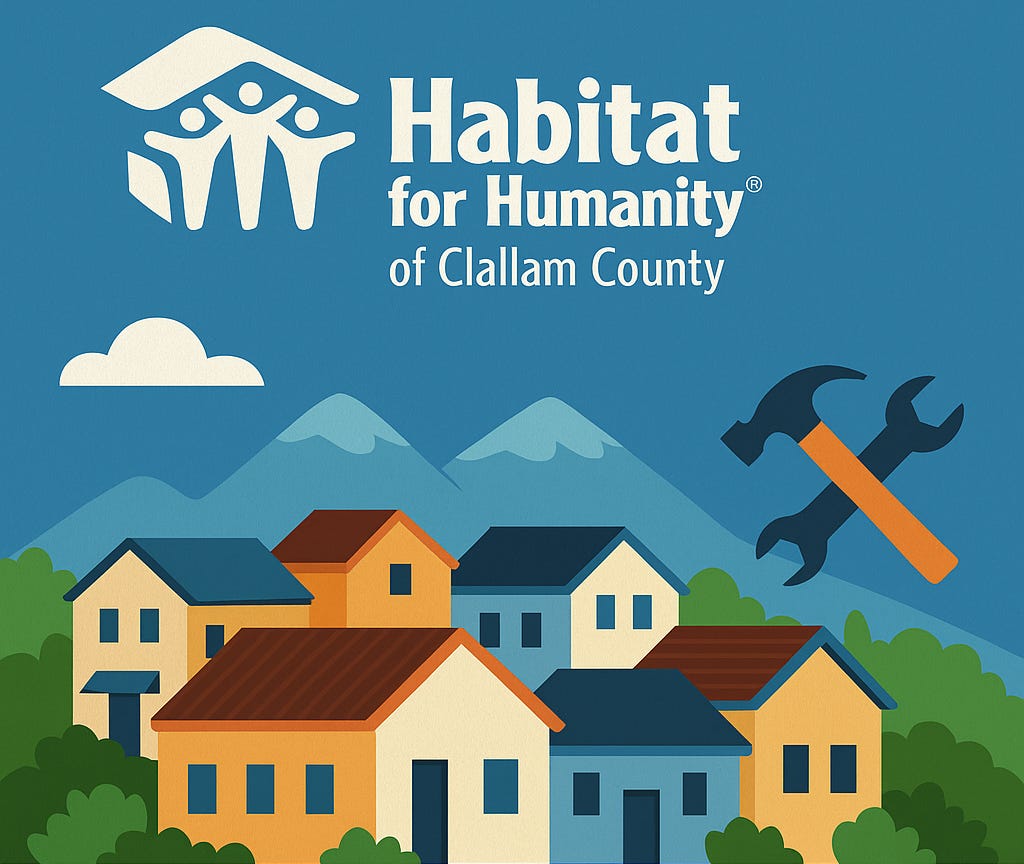
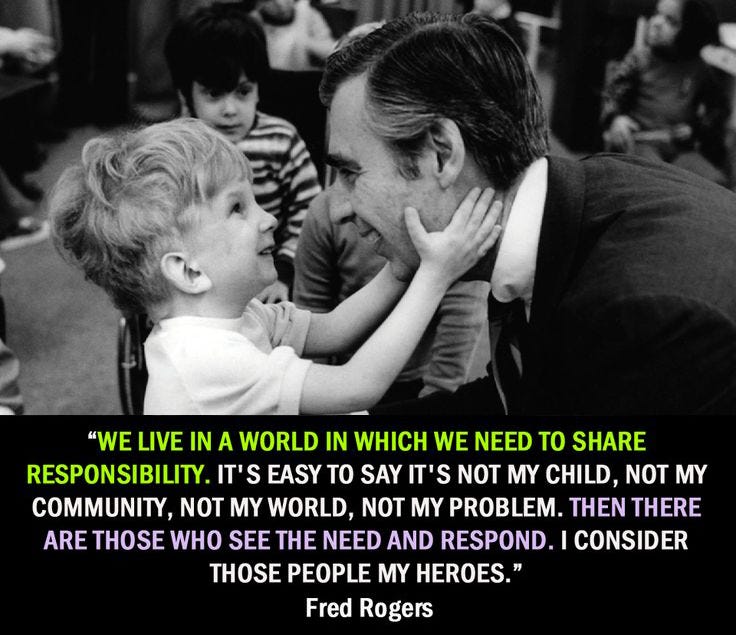
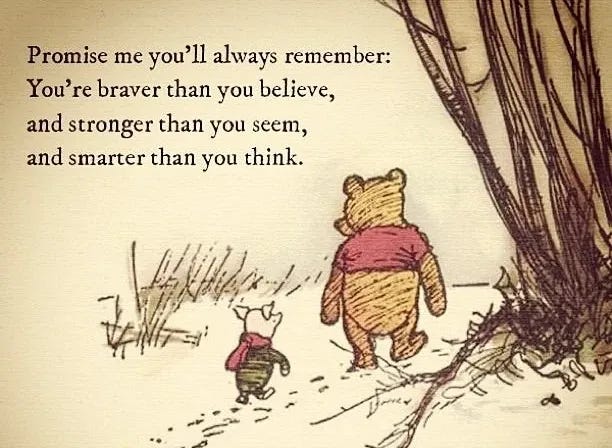
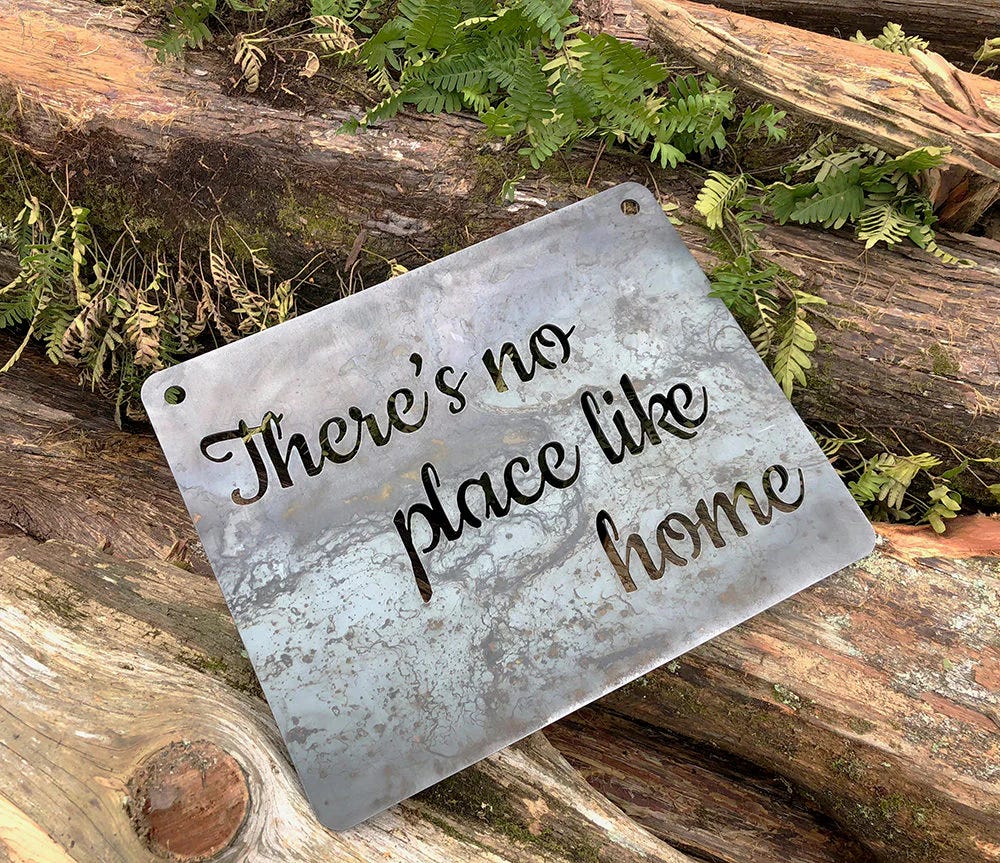
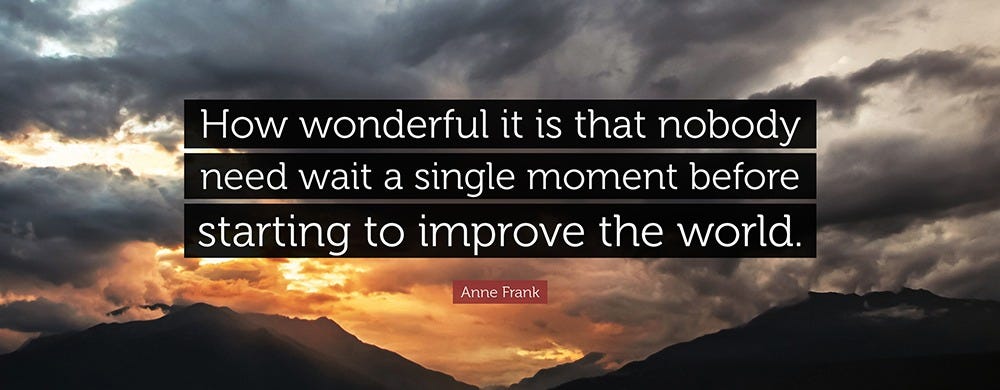
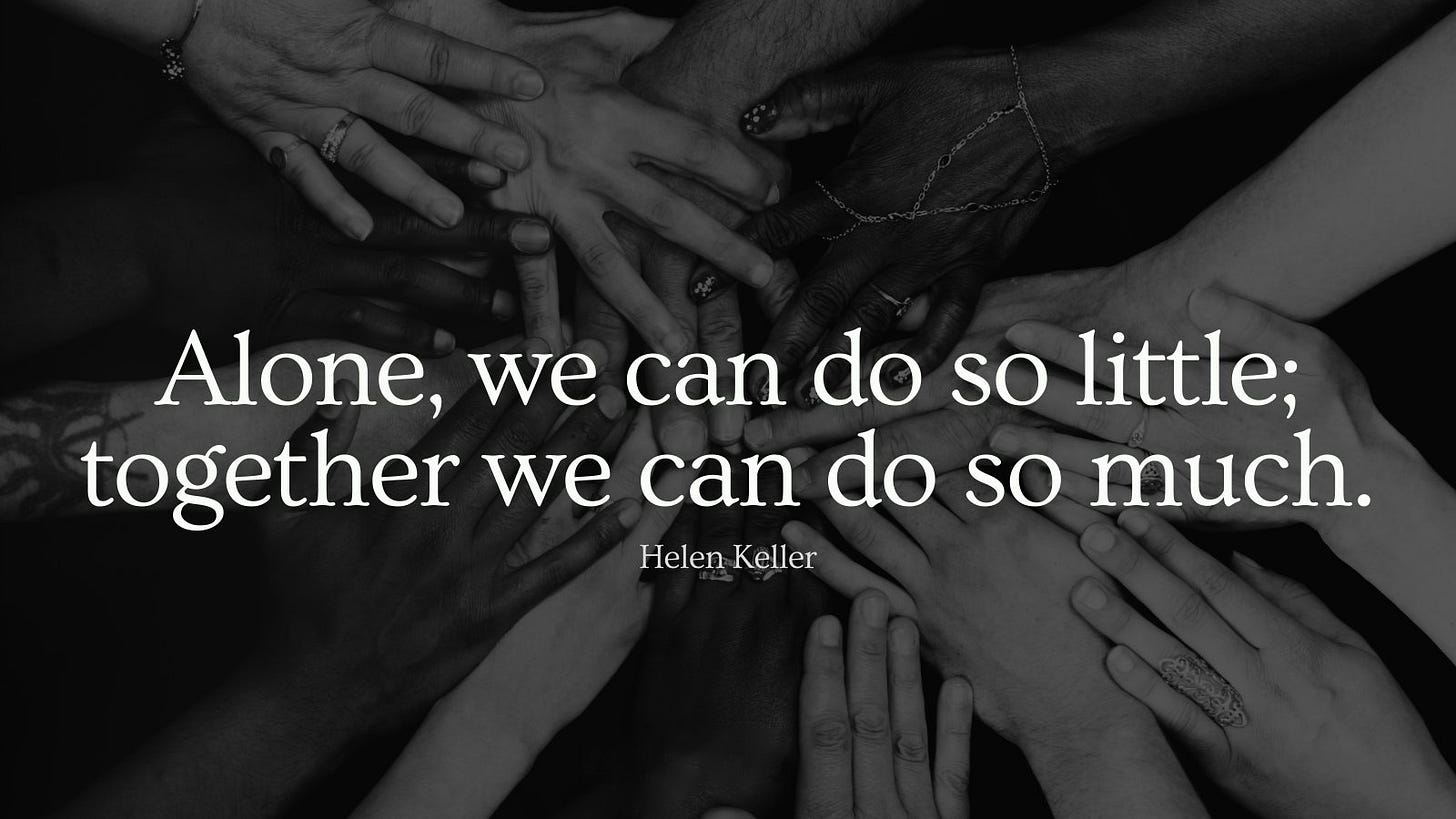
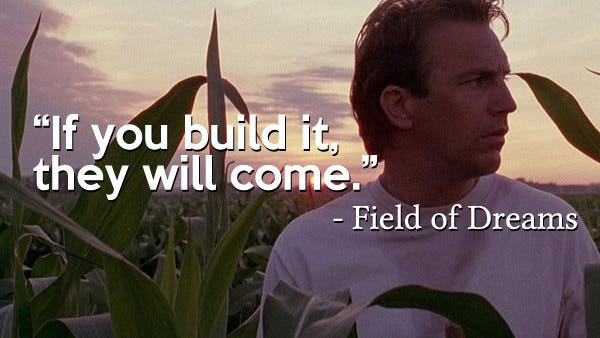
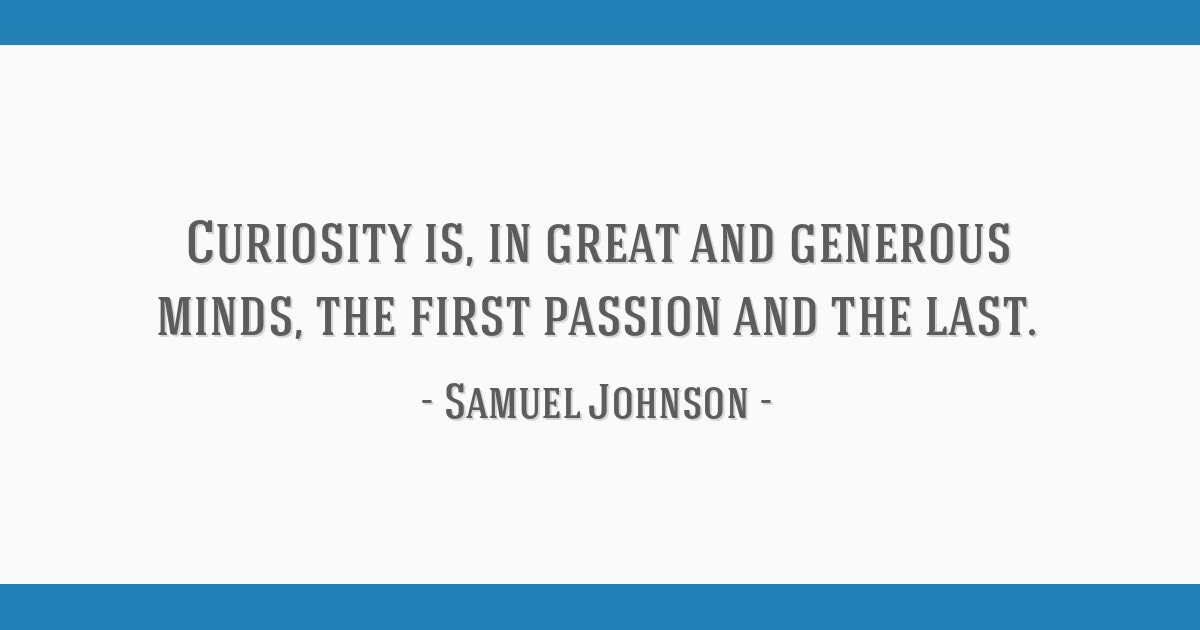
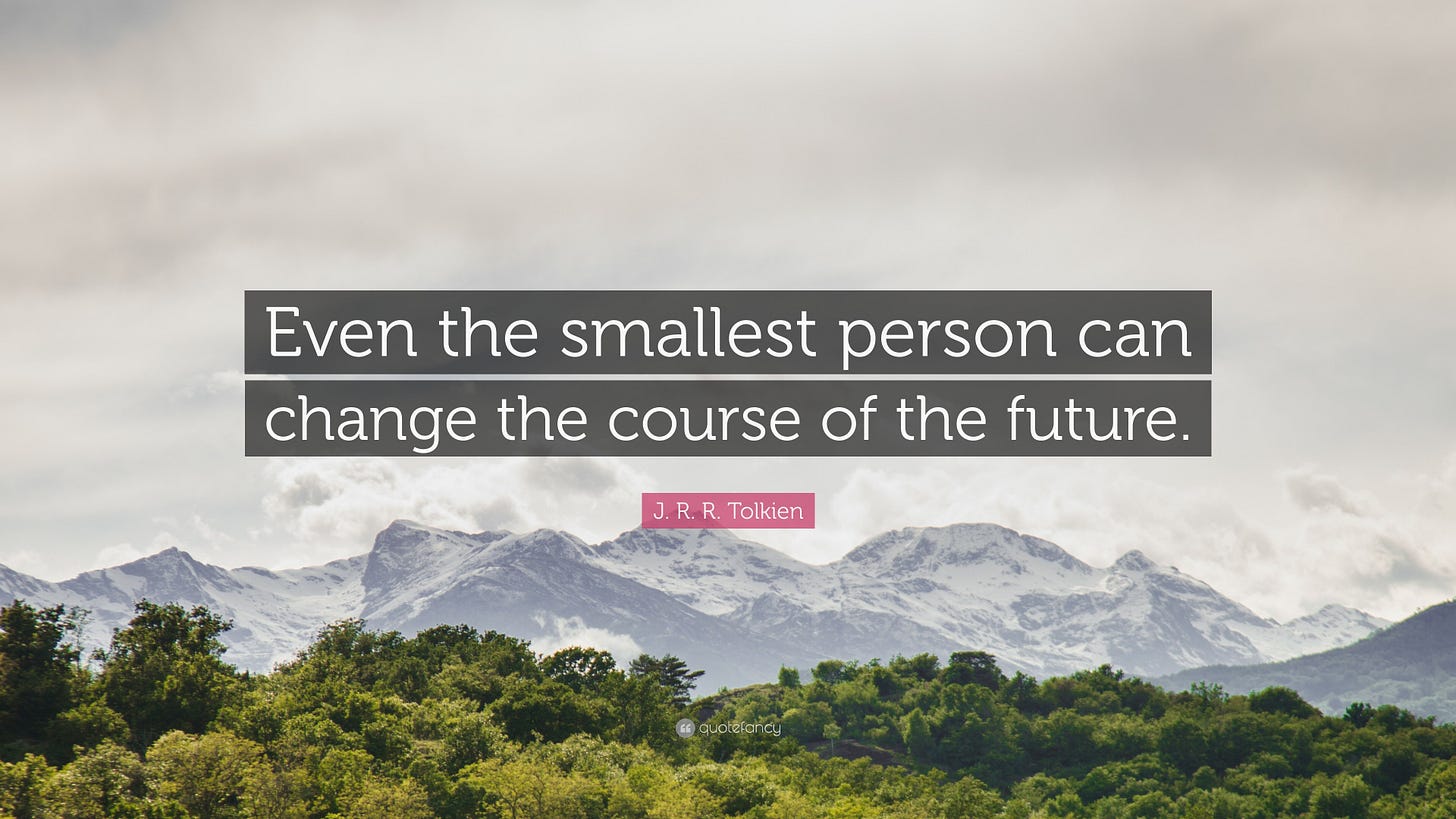
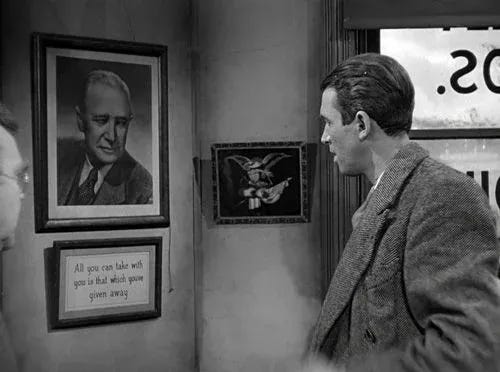
Whoa. What a HUGE effort to write up such a detailed report. I must admit it took three sessions to finish reading!
I like hearing about the progress on specific projects. I am sorry to hear about all of the delays with Lyon Landing.
Just out of pure curiosity...
1.) Can you tell me more about the 25 applicants for the 14th home at Maloney Heights. Did they all meet the minimum standards for AMI, credit worthiness, and ability to repay? Even if say half of them were qualified, what stood out about the "winning" applicant? Also, what was the final price and how much was the silent-second mortgage?
2.) I would also love to hear more about the 40 homes built by HFHCC thus far. How many have turned over to new owners? What was the average length of ownership? Have there been any issues with new owners defaulting on their loans?
3.) Did you see that the Department of Commerce Housing for All Planning Tool is recommending COPA build 2143 homes in the next twenty years with 84% for people making less than 80% of AMI? What are the implications for our community?
4.) Lastly, COPA is leaning into ADUs and multi family (e.g. there were 3x as many building permits compared to single family homes last year). This style of building means PA is focused on creating vastly MORE rental properties (despite already having a very high 46% of existing housing stock already as rentals). What does this building shift mean for COPA and HFHCC?